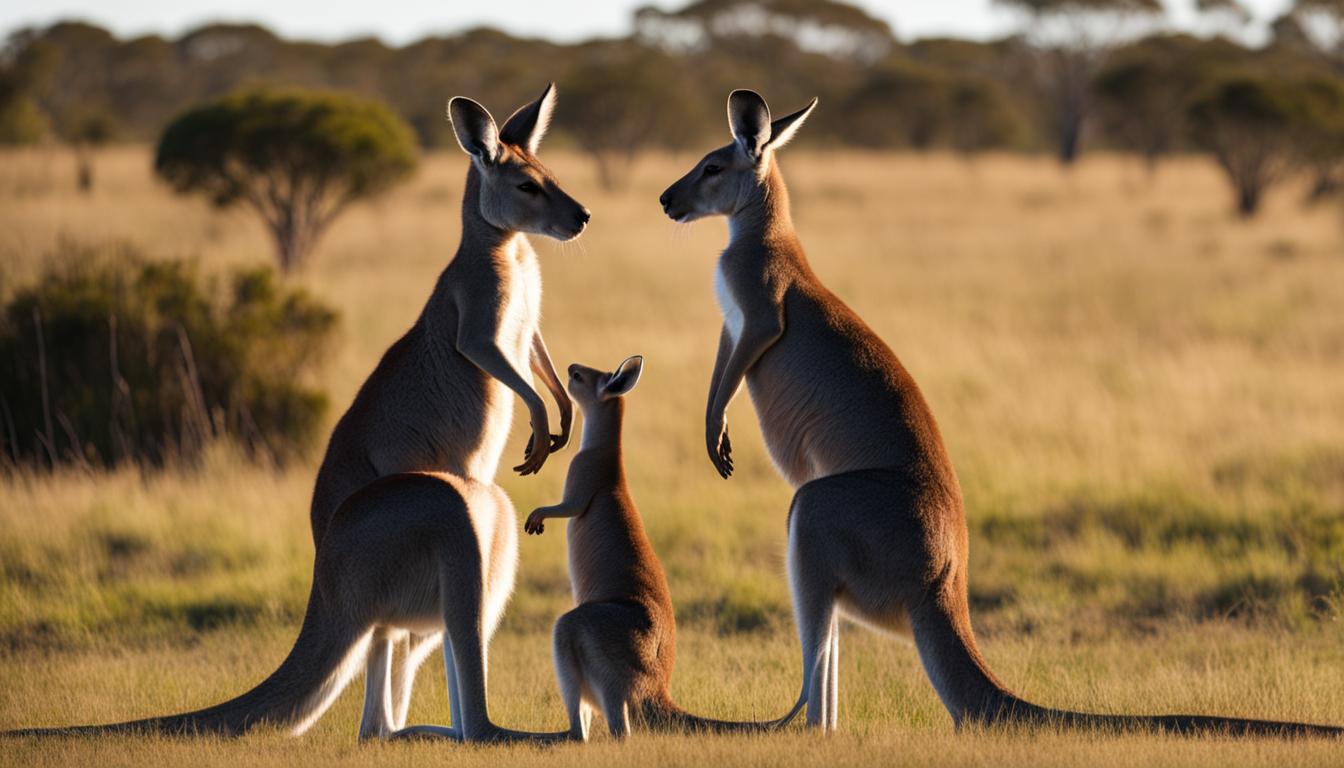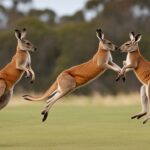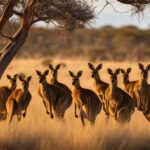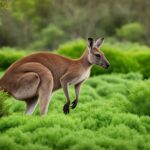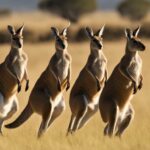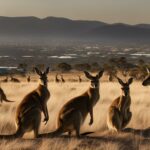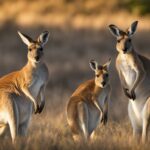Welcome to our article on kangaroo reproduction, where we will explore the fascinating process behind the breeding and mating habits of these unique marsupials. From their reproductive system to the gestation period and behavioral patterns, we will delve into the intricate details that make kangaroo reproduction so intriguing.
But first, let’s take a moment to appreciate the beauty of these magnificent creatures.
Now, let’s jump right into the world of kangaroo reproduction. Discover how their reproductive organs function, the remarkable gestation period, and the reproductive behavior that sets kangaroos apart. We’ll also explore the fascinating concept of embryonic diapause and the flexibility it provides.
Stay tuned as we uncover the secrets behind kangaroo breeding and reproductive success, providing valuable insights into the life cycle of these iconic animals. Let’s dive in and learn more about these incredible marsupials!
The Marsupial Reproductive System
The kangaroo reproductive system is a marvel of nature, perfectly adapted for the unique process of marsupial reproduction. Both male and female kangaroos possess specialized reproductive organs that enable them to efficiently reproduce and raise multiple offspring simultaneously.
Female Reproductive System
Female kangaroos have two vaginas and two uteri, a feature exclusive to marsupials. This dual reproductive anatomy allows them to carry and give birth to two embryos at the same time. Each uterus is connected to a separate vagina, which allows for the fertilization and development of different embryos simultaneously.
Male Reproductive System
The male kangaroo also possesses unique reproductive organs. The shape and structure of the kangaroo’s penis and testes are adapted to facilitate successful mating. Notably, the male kangaroo has a bifid penis, which splits into two shafts, each capable of fertilizing a separate vagina during copulation.
Reproductive Adaptations
The reproductive organs of kangaroos and other marsupials have evolved to support their distinctive reproductive cycle. The ability to simultaneously carry and rear multiple offspring is a remarkable adaptation that ensures the survival and propagation of the species. This reproductive system allows female kangaroos to have different joeys at various stages of development, providing flexibility and increasing their chances of reproductive success.
| Marsupial | Number of Vaginas | Number of Uteri |
|---|---|---|
| Kangaroo | 2 | 2 |
| Koala | 2 | 2 |
| Wombat | 2 | 2 |
| Tasmanian Devil | 1 | 2 |
The Development of Joeys in the Pouch
Once a joey is born, it embarks on an incredible journey of development inside its mother’s pouch. At birth, the joey is tiny, resembling a lima bean in size. However, despite its small size, the joey has remarkable instincts that guide it to climb up its mother’s abdomen and make its way into the pouch.
Inside the pouch, the joey continues its development over the course of several months. It grows fur and gains strength, supported by its mother’s milk. The joey remains in the pouch for around 6 to 9 months, feeding on the nutrient-rich milk until it reaches a certain level of growth and independence.
As the joey grows, it begins to venture out of the pouch and explore the world, while still relying on its mother’s milk for nourishment. This transition period can take up to a year, during which the joey gradually starts to graze on vegetation and become more self-sufficient. It’s a critical phase that prepares the joey for the challenges of the outside world.
The Unique Bond between Mother and Joey
The development of joeys in the pouch is a testament to the extraordinary bond between mother and offspring. Inside the pouch, the joey receives not only nourishment but also warmth and protection. The mother’s pouch provides a safe and nurturing environment for the joey’s early stages of life, allowing it to grow and develop at its own pace.
“The pouch is like a cozy haven for the joey, providing the perfect conditions for its growth and survival,” says Dr. Jane Wilson, a marsupial expert. “It’s a remarkable adaptation that sets kangaroos apart from other mammals and showcases the unique reproductive strategies of marsupials.”
As the joey continues to mature, its reliance on the pouch gradually diminishes. Eventually, it will leave the pouch permanently and fully transition to a life outside. The development of joeys in the pouch is an incredible example of nature’s ingenuity and the wonders of kangaroo reproduction.
| Development Stages | Description |
|---|---|
| Birth | The joey is born in a highly undeveloped state. |
| Pouch Entry | The joey climbs into the pouch unaided. |
| Pouch Development | The joey grows fur and gains strength inside the pouch. |
| Pouch Departure | The joey starts venturing out of the pouch and exploring the world. |
Embryonic Diapause and Reproductive Flexibility
One unique aspect of kangaroo reproduction is the ability to enter a state of embryonic diapause. This remarkable process allows female kangaroos to pause the development of an embryo at an early stage, typically when it consists of only 70-100 cells. Embryonic diapause provides reproductive flexibility, as the second joey can be born and enter the pouch before the first one is fully weaned. This adaptation allows kangaroos to time the birth of their offspring to more favorable conditions, such as the availability of resources or the absence of predators.
By temporarily halting the development of the embryo, female kangaroos can ensure a successful reproduction cycle even in less than ideal circumstances. This reproductive strategy provides them with a significant advantage in their natural environment, where resources can be limited and unpredictable. Embryonic diapause allows kangaroos to manage their reproductive efforts effectively and increase their chances of producing healthy offspring.
The ability to delay birth until more favorable conditions occur highlights the adaptability of kangaroos and their unique reproductive system. It showcases their evolutionary success in a changing environment. Embryonic diapause is a remarkable example of how marsupials have developed intricate reproductive strategies to thrive in various ecological niches. This reproductive flexibility ensures the continuity of the kangaroo population and contributes to their long-term survival.
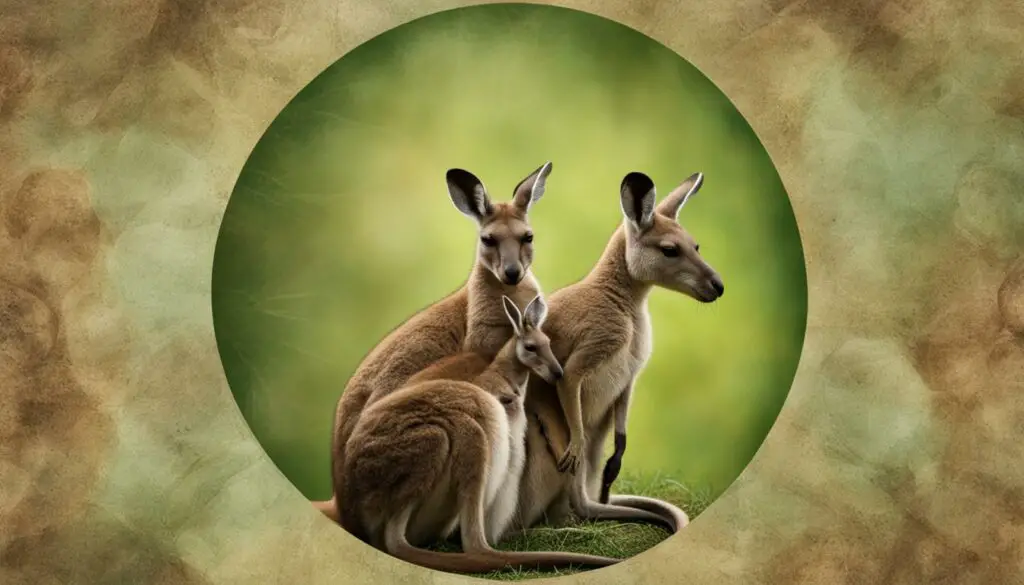
The Benefits of Embryonic Diapause
Embryonic diapause offers several advantages for kangaroos. Firstly, it allows the female kangaroo to produce multiple joeys at different stages of development, increasing the chances of survival for at least some offspring. This reproductive strategy ensures that even if one joey does not survive, there are others that can continue the lineage.
In addition, by delaying the birth of the second embryo, the mother can focus on nursing the first joey and providing it with the necessary care and nourishment. This allows the joey to gain strength and develop fully before its sibling is born. It also ensures that the mother can provide adequate milk supply to each joey, tailored to their specific growth stages.
Embryonic diapause also offers the opportunity for the mother kangaroo to recover from the physical demands of pregnancy and childbirth before starting the next reproductive cycle. This period of rest allows her to regain her strength and ensure optimal conditions for the development of the next embryo. By spacing out pregnancies, kangaroos can maintain their reproductive fitness and maximize their chances of successful reproduction.
Embryonic Diapause and Reproductive Success
The ability to enter a state of embryonic diapause contributes significantly to the reproductive success of kangaroos. It allows them to time the birth of their offspring to coincide with favorable environmental conditions, ensuring the availability of food and resources for both the mother and the joey. By delaying the development of the embryo, kangaroos can optimize the chances of survival for their offspring and increase their overall reproductive fitness.
Kangaroo Breeding and Reproductive Behavior
Understanding kangaroo breeding and reproductive behavior provides valuable insights into the fascinating life cycle of these iconic marsupials. Kangaroos are known for their unique reproductive strategies and adaptability in various environments.
One key aspect of kangaroo breeding is that it occurs year-round, with no specific mating season. Female kangaroos become sexually mature at around two years of age and can give birth to their first joey at that time. This flexibility allows them to adapt to changing environmental conditions and maintain population stability.
Female kangaroos have the ability to mate with multiple males, leading to the potential for offspring with different fathers. This reproductive behavior contributes to genetic diversity within kangaroo populations. It also ensures the survival of their species, as multiple fathers increase the chances of genetic adaptation and resilience.
Kangaroo mothers are remarkable caregivers, capable of raising multiple joeys simultaneously. Each joey receives milk tailored to its growth stage, providing the necessary nutrition for their development. This unique ability showcases the adaptability and nurturing nature of female kangaroos.
Kangaroo Reproductive Behavior
The reproductive behavior of kangaroos is influenced by environmental factors and the availability of resources. During periods of abundant food and water, kangaroo populations tend to increase, leading to higher breeding rates. Conversely, during times of drought or limited resources, kangaroo populations may experience reduced breeding activity.
Male kangaroos engage in various reproductive behaviors to attract females, including boxing matches with other males to establish dominance. The dominant males have a higher chance of mating with receptive females. This competitive behavior ensures that only the fittest males pass on their genes, contributing to the overall fitness of the population.
In conclusion, understanding kangaroo breeding and reproductive behavior provides valuable insights into the adaptability and genetic diversity of these fascinating marsupials. Their year-round breeding, multiple mating partners, and nurturing behavior contribute to their reproductive success and population stability. Studying their reproductive strategies enhances our appreciation for the unique ways in which nature ensures the survival of different species.
Kangaroo Island and the Abundance of Kangaroos
Kangaroo Island in Australia is a haven for nature lovers and wildlife enthusiasts alike, offering a unique opportunity to witness the abundance of kangaroos in their natural habitat. As the name suggests, this island is home to a thriving population of these iconic marsupials, making it a must-visit destination for those seeking an up-close encounter with these fascinating creatures.
With its diverse and picturesque landscape, Kangaroo Island provides an ideal habitat for kangaroos to thrive. The island’s extensive grasslands, woodlands, and coastal areas offer ample food sources and shelter for these marsupials, allowing them to flourish in large numbers. The untouched wilderness of Kangaroo Island provides a truly immersive experience, where you can observe kangaroos in their natural behaviors, from grazing on lush grasses to bounding effortlessly across the landscape.
“Kangaroo Island is a paradise for wildlife enthusiasts, and its kangaroo population is truly awe-inspiring. As you explore the island, you’ll have the chance to witness kangaroos in various stages of their reproductive cycle, from mating behaviors to the nurturing of joeys in the pouch. It’s a unique opportunity to gain firsthand insights into the fascinating world of kangaroo reproduction and witness the marvels of nature.”
Kangaroo Island’s commitment to conservation and preservation has led to the protection of the island’s unique ecosystems, ensuring a sustainable environment for both kangaroos and other native wildlife. The abundance of kangaroos on the island serves as a testament to the success of these conservation efforts, providing a sanctuary for these marsupials to thrive.
| Key Facts about Kangaroo Island |
|---|
| Kangaroo Island is the third-largest island in Australia, covering an area of 4,405 square kilometers. |
| The island is located about 15 kilometers off the coast of South Australia, easily accessible by ferry or plane. |
| Kangaroo Island is known for its pristine beaches, rugged coastline, and diverse wildlife, including not only kangaroos but also koalas, sea lions, and more. |
| The island offers a range of eco-tourism experiences, from guided wildlife tours to hiking trails that showcase the island’s natural beauty. |
| Visitors can also indulge in the island’s fresh produce, including its renowned seafood, wines, and locally sourced ingredients. |
Whether you’re a nature enthusiast, an animal lover, or simply seeking an unforgettable adventure, Kangaroo Island is a destination that should not be missed. Immerse yourself in the splendor of its pristine landscape, witness the abundant kangaroo population, and create memories that will last a lifetime.
Conclusion
Kangaroo reproduction is a remarkable process that showcases the unique adaptations of marsupials. From their short pregnancy period to the development of joeys in the pouch, kangaroos have a fascinating reproductive cycle. Female kangaroos are capable of raising multiple joeys simultaneously, each receiving specialized milk according to their growth stage.
The ability of kangaroos to enter a state of embryonic diapause provides them with reproductive flexibility. This pause in development allows them to delay birth until more favorable conditions arise, ensuring the survival of their offspring. It’s a remarkable adaptation that contributes to the reproductive success of kangaroos.
Kangaroo Island, with its abundant kangaroo population, offers a unique opportunity to observe these captivating creatures in their natural habitat. The island’s diverse ecosystems support a thriving kangaroo population, and witnessing their breeding and reproductive behaviors provides valuable insights into their life cycle. Kangaroo reproduction is a testament to the resilience and adaptability of these iconic marsupials.
What is the Reproduction Cycle of Kangaroos and How Does it Affect Joey Development?
The reproduction cycle of kangaroos plays a crucial role in the baby kangaroo development and growth. After a gestation period of about 30 days, the baby kangaroo, also known as a joey, is born. It then continues to develop and grow in its mother’s pouch for several months before venturing out on its own.
FAQ
How long is the kangaroo’s pregnancy period?
The pregnancy period for female kangaroos is approximately 28 days.
Do kangaroos have a placental connection with their offspring?
No, kangaroos do not form a placental connection with their young. The marsupial embryo is born in an undeveloped state and makes its way to the mother’s pouch.
How long do joeys stay in their mother’s pouch?
Joeys typically stay in their mother’s pouch for around 6 to 9 months, where they continue to develop and receive milk.
What is embryonic diapause?
Embryonic diapause is a unique ability of kangaroos to pause the development of an embryo at an early stage. This allows the second joey to be born and enter the pouch before the first one is fully weaned.
How long does it take for a joey to fully transition from milk to grazing?
A joey may continue to rely on milk for up to a year before fully transitioning to grazing.
Can female kangaroos mate with different males?
Yes, female kangaroos can mate with different males, potentially resulting in multiple fathers for their offspring.
Where is a popular place to observe kangaroos in the wild?
Kangaroo Island in Australia is known for its abundance of kangaroos and is a great destination for wildlife enthusiasts.

